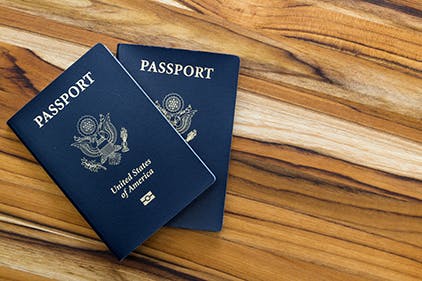What Is I-9 Employment Eligibility Verification?
A guide to completing and staying compliant with Form I-9 for onboarding and payroll providers.

A potential worker must prove eligibility to work in the United States through specific documents. It’s a typical scenario across platforms and providers: Onboarding and payroll providers
must onboard staff quickly, and candidates arrive with strong recommendations. They have the right skills and qualifications, but before onboarding, Form I-9, Employment Eligibility Verification, must be completed.
Both the worker and the employer must sign the form, attesting that the individual is legally authorized to work in the U.S. The provider or platform doesn't submit it to the IRS or any other government agency. However, platforms must keep the documents on file for every worker onboarded.
For more information, please read Symmetry’s Form I-9 verification guide for onboarding and payroll providers.
What’s New in 2025
- Section 1 checkbox now says “an alien authorized to work” instead of “A noncitizen authorized to work.”
- List B documents now use “sex” instead of “gender.”
- E-Verify reflects this updated language as of April 3, 2025.
Acceptable Documents for I-9 Verification
Workers must provide either:
- One document establishing both identity and authorization (e.g., U.S. passport, Permanent Resident Card), or
- A combination of one document proving identity (e.g., driver’s license, school ID, voter registration card) and one proving work authorization (e.g., Social Security card, certified birth certificate).
Remote Verification Rules
The temporary COVID-era allowance for virtual document review has ended. Only onboarding and payroll providers enrolled and in good standing with E-Verify may conduct remote I-9 reviews using DHS-approved procedures.
Provider Responsibilities
The employer signing the I-9 and the onboarding platform or the provider must examine documents at the time of onboarding. The signature verifies that the documents appeared valid and belonged to the individual presenting them.
- Providers cannot dictate which documents a worker presents.
- Photocopying is optional but recommended to demonstrate compliance.
- Original documents must always be returned immediately after review.
In 2025, civil fines range from $2,861 per paperwork violation to $28,619 per unauthorized worker, with repeat offenses carrying steeper penalties. ICE has also begun using AI to detect inconsistencies, making compliance more critical than ever.
You can learn more about how Symmetry is revolutionizing remote Form I-9 completion for providers.
Recordkeeping Best Practices
Even if platforms or providers onboard only a handful of workers, they must keep records:
- Retain Form I-9 for three years after hire or one year after employment ends (whichever is later).
- Maintain separate folders for I-9 forms and related documents.
- Be audit-ready by maintaining supporting documentation, such as performance records, hours worked, and job descriptions.
Form I-9 Questions and Answers
What is Form I-9 and why is it important?
Form I-9 verifies employment eligibility for each new worker. Both the worker and employer must sign it. While it’s not submitted to government agencies, it must be stored and available for audit.
What’s new with Form I-9 in 2025?
- Language changes: “noncitizen” is now “alien authorized to work.”
- List B documents now reference “sex” instead of “gender.”
- E-Verify updated to reflect changes as of April 3, 2025.
What documents can workers provide?
Workers may present either:
- One document proving both identity and authorization, or
- A combination of identity and authorization documents from the I-9 list.
- Providers cannot decide which specific documents workers must show.
Can documents be reviewed remotely?
Only providers in good standing with E-Verify may conduct remote verification under DHS rules. All others must review originals in person.
What are provider and platform responsibilities?
- Examine original documents.
- Confirm they appear genuine and belong to the worker.
- Sign the I-9.
- Return documents after review.
What are the penalties for noncompliance?
- $2,861 per paperwork violation.
- Up to $28,619 per unauthorized worker.
- Higher fines for repeat offenses.
- AI-driven ICE audits now focus on identifying errors and inconsistencies.
How long must providers keep I-9 forms?
Three years after the hire date or one year after termination—whichever is later.
What are Form I-9 Best practices?
- Keep Form I-9s separate from other HR files.
- Store supporting documentation.
- Stay current with evolving DHS and ICE requirements.
